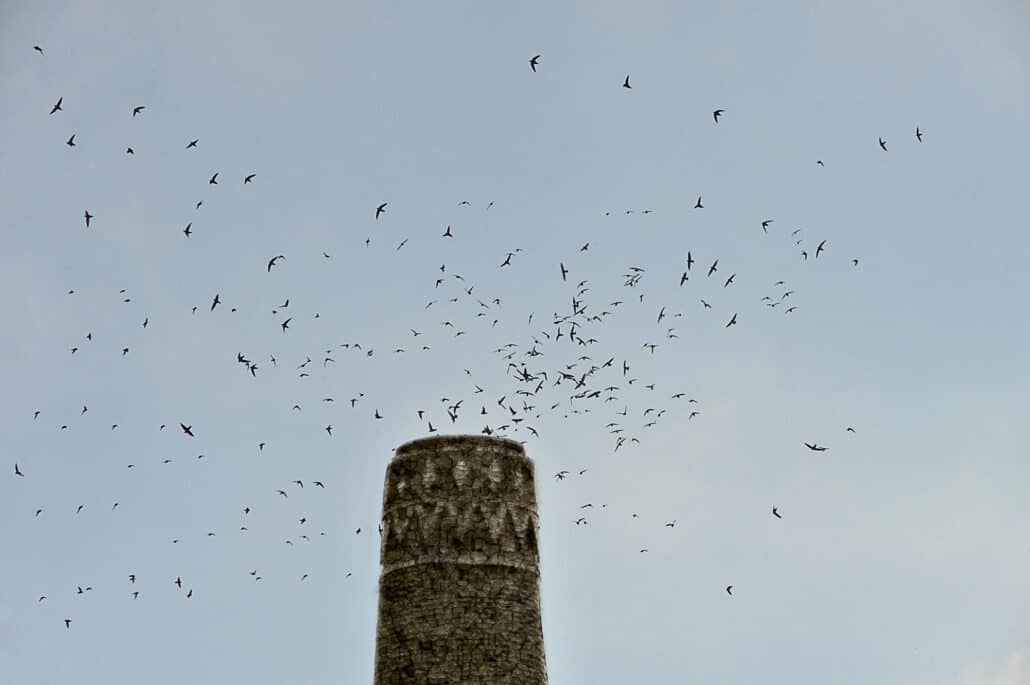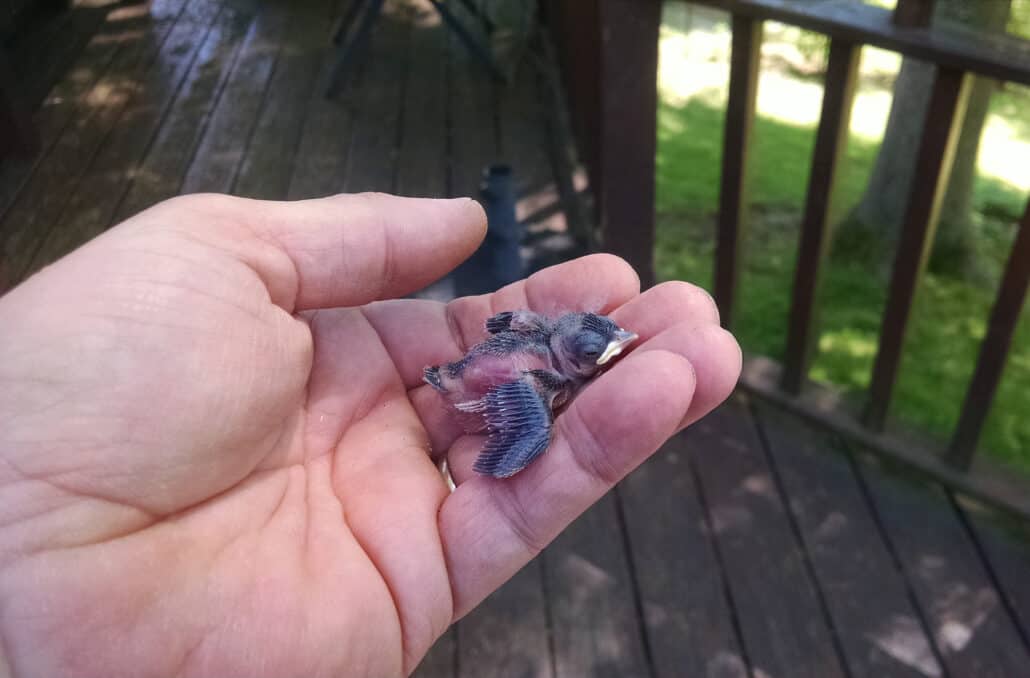Providing for birds in your backyard is easy. With a well-rounded landscape plan, you will be creating natural communities that mesh with your local ecosystem. To accomplish this, you need to offer the four basic things birds need: food, water, shelter, and a place to nest. Learn how to to provide for birds in your backyard year-round so that you can enjoy the birds year-round.
1. Food for the Birds
Bird feeding is a great way to attract birds to your yard, but only certain species will eat the food offered in bird feeders. Many more species will eat the food that occurs naturally in a bird-friendly backyard habitat.
Natural Foods
Different birds eat different types of food, which can be either plant (seeds, berries, nectar, fruit, nuts, buds, etc.) or animal (worms, insects, larvae, eggs. mammals, fish, and even other birds). Plant parts are supplied in your yard by the flowering plants, grasses, shrubs, vines, and trees that are growing there. Animals, such as insects and reptiles, will be attracted to the plants in your yard, which will in turn attract birds.
Decide which bird species you want to attract and find out their food preferences. To attract more chickadees and titmice, for example, plant sunflowers to augment the sunflower seed at your feeders. If you want to encourage waxwings to visit, plant berry-producing trees such as a native cedar or cherry.
Fruit trees are great bird attractants because their blossoms attract insects (which attract flycatching birds) and nectar (for hummingbirds, orioles, and tanagers). The fruit from fruit trees will be readily eaten by many birds and other wildlife (perhaps they will leave some for you). And there’s always the chance of attracting less commonly seen birds to your plantings. Keep those binoculars handy!
Timing is Everything
When choosing landscape plants as a food source, mix them up so that fruits mature at different times. Summer fruits, such as blackberries, raspberries, elderberries, and pokeberries, are easy for birds to find as they forage.
Autumn food sources in your backyard are important as birds prepare for winter and as migratory species seek to replenish their energy before flying on. Autumn fruits are generally supplied by summer-flowering plants, such as sumac, dogwood, and chokeberry.
Winter fruits are supplied by persistent fruits, those that remain on the plant through the colder season. Some common winter fruit-bearing plains include winterberry, hollies, and hawthorn.
2. Water: Drips, Mist, Sprays, or Pools
Although some birds do not drink water—they can get water from the food they eat, and some birds, such as grouse, turkeys, and quail, bathe in dust rather than in water—it is an essential that many birds require for both drinking and bathing. If your backyard does not currently offer a source of water, you’re really (pardon the expression) missing the boat. Providing water in your backyard is not as complex as you might think.
Natural Water Sources
If you have a natural water source on your properly, such as a stream, pond, or spring, you are well on your way. Look carefully, and you may be able to determine which part of your water source is used regularly by the birds. Chances are it is a shallow, secluded spot where the water is still or slow-moving. Take a few hours on a warm morning to sit by this spot and observe the comings and goings.
Artificial Water Sources: Birdbaths
If your yard is like mine, you’ll have to create an artificial source of water, such as a birdbath. Birdbaths do not have to be fancy. For a super-inexpensive bath, just bury an old metal trashcan lid at ground level to create a permanent water area. Put a layer of flat rocks on the bottom to give the birds better footing.
To attract a greater variety of birds, add motion to your birdbath by letting your garden hose drip into the bath. To conserve water, do this over an area of your yard that needs a drink. Devices called misters and drippers are available commercially for the same purpose. Nothing catches a passing songbird’s attention like moving water.
If you wish to purchase a birdbath, buy the basin, but skip the pedestal and place the basin on the ground, or slightly above ground, raised by a few stones. This lower placement will attract the maximum number of birds.
Remember, birds need water in winter, too. In parts of the continent where winter is very cold, keep your water unfrozen with a thermostatically controlled water heater. These devices, submerged in your birdbath, automatically turn on when the water reaches 35 degrees F (just above the freezing mark) and shut down at 40 degrees.
Ponds and Water Gardens
Some bird gardeners find they want more from a water source. This usually means installing a small garden pond or a water garden. Ponds and water gardens can provide beauty and entertainment for human beings and a great bathing and drinking place for birds.
There are dozens of excellent specialty ponds and water gardens available commercially in North America. Ask your local landscaping expert for advice about creating or installing a water garden in your yard. Avoid prefabricated gardens with sleep, slick sides that do not feature a shallow area for bird access.
If birds can’t get to the water safely and easily, they will not accept the invitation to visit your pond. You can, however, retrofit a preformed pool by making a “table” of flat rocks just under the water’s surface, where birds may stand to drink and bathe. Once your pond is established, you may wish to add plants and fish. Frogs, toads, and aquatic insects will find your pond on their own.
3. Give Them Shelter
Birds need cover in every season to protect them from weather extremes. Evergreens (which don’t lose their leaves in winter), including hollies, firs, pines, and hemlock, provide excellent cover from the elements year-round. During a sunny summer afternoon, birds will gravitate to the shade provided by tall deciduous shade trees, such as tulip poplars, maples, oaks, aspens, cottonwoods, and sycamores.
4. A Place to Nest
From late winter through spring and summer, birds need a source for nesting material and a place to build a nest, lay eggs, and raise their young. Exact nesting requirements vary from species to species.
For most of North America, the breeding season starts in late January, when great-horned and other owls lay eggs, and ends in August with the thistle-down-lined nest of the American goldfinch. If you live in the warmest portions of the continent, you may have birds nesting at all times of the year.
What is the best way to provide nesting habitat for backyard birds? The answer falls into two categories, much as bird feeding does: natural (that which naturally occurs in good bird habitat) and artificial (or human supplied, such as nest boxes and nesting shelves). Let’s tackle nest boxes first.
Nest Boxes for Birds
Cavity-nesting birds are the only species that will use a bird nest box (or birdhouse, if you prefer). A cavity nester is a bird that is adapted to nest inside an enclosed area. Some of the cavity nesters commonly found in backyard nest boxes include chickadees, titmice, wrens, bluebirds, woodpeckers, nuthatches, some flycatchers, and even certain species of owls, falcons, and ducks. The natural equivalent of a nest box is a woodpecker hole or a hollow tree. The nest boxes we provide for birds emulate a natural cavity.
Nest boxes come in two styles: good for people and good for birds. If you are serious about being a good landlord to your backyard birds, ignore any bird housing that is in any way decorative. If you simply can’t resist, buy it and put it up in your living room, but not outside. Go instead for function over form. Get a house that has the right dimensions (entrance hole, interior) for the birds in your yard; you (and the birds) will be better off.
Natural Nesting Habitat
When you tuck your children into bed at night, doesn’t it feel good to know that they are sheltered by a roof and walls, protected from the elements and from harm? Birds need to feel safe and secure when they raise a family, too. What’s the secret to making them feel safe? Cover.
Cover comes in all forms for nesting birds. It can be tall grass, brushy fields, thick hedges or shrubs, hollow trees, or any type of tree, for that matter. Birds will even nest in old tin cans, mailboxes, door wreaths, and hanging flower baskets. As long as your property is a mix of vegetation types, forms, and sizes, you will have nesting birds. The more cover you provide, the more nesting birds you will attract.





Also, learn about location. Bluebirds do best as far away from trees as possible to avoid predation from House Wrens. Provide an extra nest box near the Bluebird box for Tree Swallows (place about 15 feet away). Don’t put too many boxes close together or you may get multiple Tree Swallows that will gang up on the Bluebirds. Male House Wrens will build a number of nests in multiple boxes and let the female chose. Place 3 or for boxes near the trees around the house and garden to encourage them to stay away from the Bluebirds and Swallows. Make sure your hole sizes are appropriate to discourage Starlings. If you have a problem with House Sparrows, I would take a tough line. Probably the most effective way I’ve found to deal with them is to let them have a box, monitor for eggs, and keep removing the eggs on a regular basis so that they are busy, but don’t reproduce. Male House Sparrows will drag Bluebirds and Swallows from their boxes and may kill them. If you find broken eggs below the nests, it is probably House Wrens. House Wrens may mortally injure Bluebirds and Swallows in the boxes. If you have signs of House Wren problems, the best solution is to put a number of boxes up for them away from the Bluebirds.
Hint for Bluebird or Tree Swallow nest photos. If you mount the box on a piece of pipe, drive a piece of rebar into the gound, and put the main pipe over the rebar, the next on the box can be turned to catch the best light. If you give the box a turn every day (a few inches at first, then more later) the birds will be very used to it and will give you fabulous photo ops
BTW, there is no single perfect design for bird houses. I make mine with a top that comes off. You are supposed to check the birds once a week for parasites and other problems. I make my boxes with a top that comes off rather than opening from the side. Two advantages. The older birds never jump out and force you to chase them down. Also, great for photos.